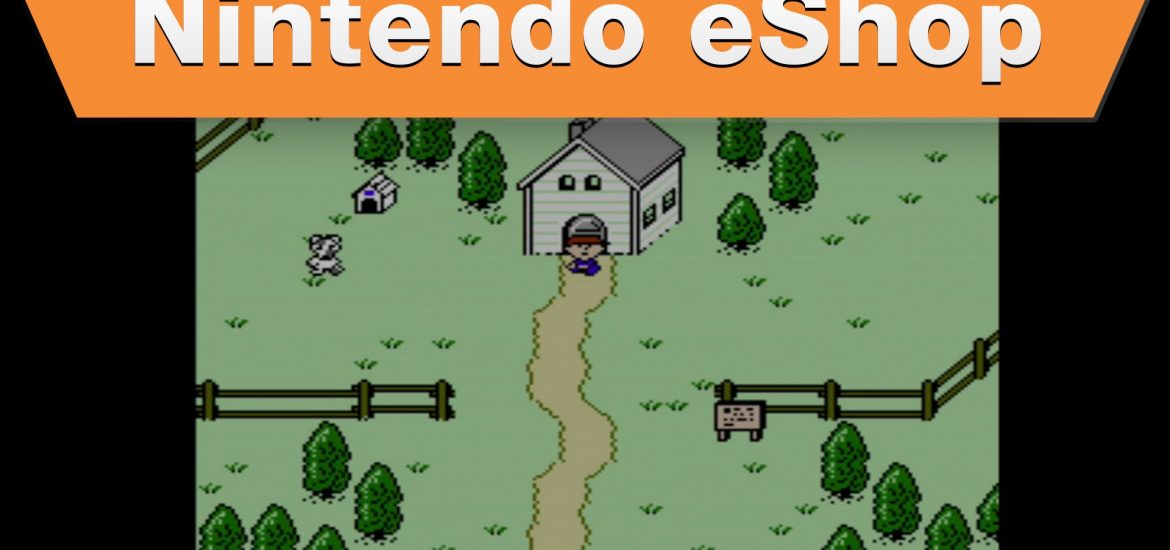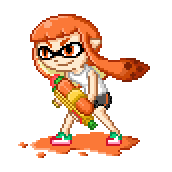At the start of yesterday’s Nintendo World Championships, we were all hit with a major surprise, introduced by Shigesato Itoi. EarthBound Beginnings, better known as Mother or EarthBound Zero in the west, was announced for immediate release on Virtual Console and introduced in a very personal statement by the game’s creator.
The game itself was fully translated by Nintendo of America all the way back in 1990 but with the upcoming release of the Super Nintendo, they decided it wasn’t a good idea to release such a niche RPG on the aging hardware. When the script leaked online about ten years or so ago, fans of the Super NES sequel Mother 2, aka EarthBound, finally got the chance to experience the title that started it all. But now this cult-favorite emulation and reproduction game is finally officially available in North America and Europe.
And this is potentially a good sign for great things to come for Virtual Console, because Mother is hardly the only classic first-party game missing from the west, or missing entirely.
Let’s take a look at some of those other titles, particularly Mother 3 for the Game Boy Advance and Star Fox 2 on the Super NES.
In the case of Mother 3, we have an interesting history. Mother 3 was originally announced for the ill-fated Nintendo 64 Disk Drive system, an add-on that used re-writable magnetic disks for expansions on existing games and the possibility of many new ideas with new games. For example, The Legend of Zelda: Ocarina of Time planned to utilize the Disk Drive to offer new dungeons and content; an expansion disk infamously known as Ura Zelda. The possibilities were seemingly endless, but the expansion ultimately flopped.
There were only 10 releases for the Disk Drive in Japan, including a 4-part successor to Mario Paint called Mario Artist that used online sharing, but many titles were moved or scrapped altogether. Doubutsu no Mori, Ocarina of Time, and Banjo-Tooie were converted to cartridges, Dragon Quest VII moved to the PlayStation, the disk that offered stereo music and a track editor to F-Zero X has never been seen in the west, and Mother 3 was abandoned entirely.
But not before a nice little teaser at Nintendo Space World 1999:
The story goes that Mother 3 began development in 1994 on the Super Nintendo, but jumped ship to the 64 to make use of the new 3D capabilities. About halfway through development, the team scaled the game back a bit and moved again to the Nintendo 64 DD to take advantage of the more powerful hardware. Then, after the DD was considered a flop, it moved back to the regular ‘ol Nintendo 64. After a number of delays, it was eventually cancelled and, with the encouragement of his fans, Itoi-san continued with the project on the Game Boy Advance until it finally saw release in 2006.
Luckily, the story wasn’t changed in the conversion. It follows a man named Flint and his son Lucas, who many in the west know solely from Super Smash Bros.. The ROM was eventually thrown online and before long, the cult-favorite had a very well-made English translation patch ready to go.
The patch creators have offered their translation to Nintendo to use if they wanted an easy release in the west, but the offer was never taken and Mother 3 sat in obscurity with its fore-mother (see what I did there?) as a title only playable in English through emulation or reproduction cartridges.
What the release of EarthBound Beginnings means is that hope is not lost for fans of the third game in the series. It was quite the task to get EarthBound on Virtual Console to begin with, but we now have the first two titles in the series available and a platform for the third. Hopefully, if sales of Beginnings warrant it in Nintendo’s eyes, we may yet see Mother 3.
The biggest hindrance at this point, on Nintendo’s end, is that they don’t have a script ready to go. Mother had an official script implemented and the game debugged and ready to go twenty-five years ago, but Mother 3 doesn’t, at least not publicly known. It would be a stretch for Nintendo to actually use a fan-made patch, a move that might be seen as an acceptance of fan translations and patches and, by extension, emulation and the like, and Nintendo would likely stray from such an association. That’s not to say they’ll never make their own translation, though. It could certainly happen. Nintendo even joked about it at last year’s E3:
That brings me to Star Fox 2, a title with a similar history but porting problems of its own.
Star Fox was originally created by Argonaut Software and Nintendo working together. Nintendo handled the creative and presentation side mostly, while Argonaut handled the 3D programming and those now-famous voices (“Good luck!”). The game itself was made possible thanks to a graphics processor Argonaut made specifically for the game known as the Super FX chip. The game was a pretty decent success, and the Super FX was licensed out to a short list of other early 3D games.
But work on a sequel started pretty much right away. Slated for a release in June of 1995 was Star Fox 2, which was bigger and more technically impressive in every way, thanks to an improved Super FX 2 chip. The game featured a similar concept to Star Fox: Command on the Nintendo DS (more on that in a moment), by having you choose your team, including newcomers Faye and Miyu, and protect the Lylat system and Corneria from Andross’ attack ships, missiles, the mirage dragon, and even Fox’s new rival mercenary team, Star Wolf.
The game was finished, put through Mario Club for final debugging and testing, and was ready to hit Japanese shelves before it was quietly canceled just a few short weeks from release. Why would a grand 3D adventure, the follow-up to a successful game, be canceled despite being completely finished and ready to go? Blame the Ultra 64.
At the time, Nintendo’s powerhouse 3D follow-up to the Super NES, the Ultra 64, was slated for release in summer of 1995 as well. Shigeru Miyamoto wanted a clean break from the 2D era of the Super NES and its now-archaic 3D offerings, and the 3D-focused Ultra 64. Sadly for Argonaut, that meant their passionate work on Star Fox 2 would only be seen behind closed doors, used as a testing tool for early Nintendo 64 projects. To pour more salt in the wound, the Ultra 64 was delayed by over a year, giving plenty of window to still release the game.
Shortly after the Super FX 2 chip was used to impress the world with the amazing graphical quality of Yoshi’s Island, Argonaut and Nintendo had a falling out and Argonaut left, taking their patents on the FX chips with them. They hung on for a few more years before ultimately going defunct in 2004, and with it went the best hope of a Virtual Console re-release of Star Fox, Yoshi’s Island, Stunt Race FX, and Star Fox 2.
Later on, one of Star Fox‘s lead programmers, Dylan Cuthbert, would go on to make his own studio called Q-Games. He was given the chance to work on Star Fox again when his studio was given the task of creating Star Fox: Command. During its development, Nintendo let him and his team play the mastered ROM of Star Fox 2— the final release version of the game, printed on a cartridge, for the team to see. Command took a lot of gameplay influence from Star Fox 2 thanks to that opportunity.
“The initial prototype we made was very much like the original Star Fox, but Miyamoto specifically told us to take the game in the direction of Star Fox 2 and I was happy to explore those more strategic themes.” – Dylan Cuthbert, in an interview with Nintendo Life
The game is complete, in Japanese, and would be a relatively easy translation job compared to an RPG like Mother 3, but it’s currently impossible thanks to Nintendo not having the rights to the FX chips. It’s pretty hard to get licensing rights to emulate a chip from a company that no longer exists. It still may be possible one day, but the amount of legal trouble involved may not justify the return Nintendo might think they’ll get from having those three big titles, Star Fox, Star Fox 2, and Yoshi’s Island, on Virtual Console.
It’s not impossible, though. Stranger things have happened. Jez San, another co-creator of Star Fox and the FX chip, may just have the necessary paperwork Nintendo needs to license the chip for emulation, and if that hurdle is crossed, we would really be in for a treat. Yoshi’s Island may not be in the cards, since it’s already on the Wii U Virtual Console in its much less attractive Game Boy Advance form (which was recreated in a new engine from existing assets, allowing Nintendo to get around the FX issue), but that didn’t stop both versions of Super Mario World from being available on there.
It’s a big series of ‘ifs’, but it’s not impossible, and EarthBound Beginnings proves that. There is every chance in the world that Nintendo will translate Mother 3 or find its way across the FX barrier, and yesterday we all saw a shimmer of hope. It might also pave the way for Final Fantasy II and III to arrive on Virtual Console one day, as they also have partial official translations that were done in the early 90s. I’m not going to hold my breath, but Mother‘s release is glimmer of hope that one day, maybe one day, we’ll get to experience the final version of Star Fox 2 in all its glory.
Now if Nintendo and Pixar can get that court order overturned, maybe we could see Uniracers on Virtual Console someday too. That game’s a blast.


